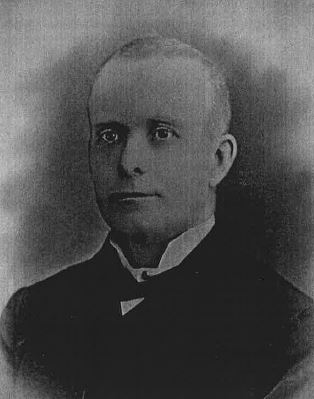By Dan McCaffery for the Sarnia Observer
He’s long forgotten today, but Mayor James S. Symington played an important role in the construction of the original St. Clair River Railroad Tunnel.
Born in rural Lambton County in 1844, Symington moved to Sarnia as a boy, later becoming a successful local businessman and banker.
Elected the Municipality’s 18th Mayor in 1888, he moved swiftly to knock down barriers standing in the way of the tunnel project. Preliminary work on the tunnel had started before he took office but Mayor Symington helped speed the job along by convincing Council to permanently close a handful of streets in the Town’s south end.
Drilling got under way in earnest during his second term in office, creating an economic boom.
Mayor Symington’s administration also stimulated the local economy by approving the construction of several grain warehouses. The move, according to a contemporary newspaper report, made Sarnia “a more attractive market for the farming community”.
He also fought to stamp out gambling, ordering police raids on a number of suspected gambling houses. In fact, several arrests were made within days of his election.
The Observer supported the crackdown, saying, “the police must use their utmost endeavors to break up the gambling houses and drive the keepers of them out of Town. Mayor Symington will deserve the gratitude of the community if he succeeds in ridding Sarnia of this evil”.
But he was in hot water two months later when a developer cut down a number of shade trees on Maxwell Street. The newspaper called it “a case of official vandalism” and suggested Maxwell’s homeowners should sue Council.
Nevertheless, the Mayor had no problem getting re-elected in 1889, winning by a 134 vote margin over former Mayor Joe Lowrie. A year earlier, Symington had beaten Lowrie by a scant 19 votes.
During his second term he concentrated on acquiring parkland and forging ahead with an important sewer project.
Mayor Symington didn’t seek a third term, deciding instead to spend more time with his growing family.
The Observer was pleased with his overall performance, declaring “he was one of the most efficient members that ever sat at Council. His name is prominently associated in connection with the acquisition of Bayview Park and the construction of the main sewer – two enterprises that have been of essential benefit to the Town”.
He died in August, 1900, at age 56, leaving behind a wife and seven children.


